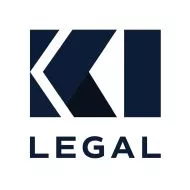As we discussed in our prior article, "Do You Qualify for an H-1B Visa?" an H-1B visa - Specialty Occupations, DOD Cooperative Research and Development Project Workers, and Fashion Models – is for persons working in specialty occupations requiring at least a bachelor's degree or its equivalent in on-the-job experience and distinguished fashion models.
The H-1B visa program allows nonimmigrant aliens with specialized knowledge seeking an employment visa to work in the United States. To do so, the program requires employers and prospective employees to file several different forms and work together to satisfy its requirements set forth by the Department of Labor (DOL) and the United States Citizenship and Immigration Services (USCIS).
So, what is the application process for an H-1B visa?
First, an employer must file a Labor Condition Application, aka "LCA," with the DOL, followed by a Visa Petition. Prior to filing the LCA, the employer must post a notice of filing the LCA at the place of intended employment. Once the LCA is certified, the employer can file the H-1B petition with USCIS.
Once the petition has been approved, the potential employee can apply for a visa at a U.S. consulate abroad and eventually enter the U.S. at a time before the visa expires. If a potential nonimmigrant alien employee seeks employment in the U.S., a more detailed understanding of these steps is required to complete the process thoroughly and accurately.
Labor Condition Application (LCA)
The LCA acts as a certification of information relating to the job being offered, such as job title, statement of wages, and more. By signing the LCA, the employer is affirming that they will pay the beneficiary at least the prevailing wage or the employer's actual wage for similar positions, whichever is higher, and that working conditions for the beneficiary will not adversely affect the working conditions of workers similarly employed. In addition, employers who become "H1-B dependent" for relying too heavily on H1-B workers require further affirmations. The determination of whether an employer is "H-1B dependent" depends on the ratio of H-1B employees to full-time employees.
Once certified by the Department of Labor, a copy of the endorsed LCA (Form ETA-9035) is then submitted to the USCIS as a part of the H-1B petition.
Visa Petition
What is a visa petition? A visa petition is the application filed with USCIS which contains the LCA and other required forms. The employer should include with the petition evidence that:
- The position offered qualifies as a "specialty occupation" in as much as a minimum of a bachelor's degree is usually required or that the job requires specialized knowledge; and
- The employee meets the job requirements.
Beneficiaries who are already in the U.S. in valid nonimmigrant status, such as students, can request a change of status to H-1B so that, once the petition is approved, their status will automatically change to H-1B. Otherwise, upon approval of the petition, the beneficiary will apply for the H-1B visa at a US Consulate abroad. Spouse and children of the beneficiary can apply for H-4 dependent status either via Form I-539 if they are in valid nonimmigrant status in the U.S. or at a US Consulate abroad. Since the petition is filed by the employer, any communications regarding the petition, such as the receipt notice and the approval notice, are sent directly to the employer
U.S. Consulate Application and Entry
The beneficiary can apply for the H-1B visa at a US Consulate abroad upon approval of the petition by USCIS. The employee can use the I-797 Approval Notice to apply for a visa at a U.S. consulate, which is most often the consulate located in the home country of the employee. The employee should go online and submit the Non-immigrant Visa Application (Form DS-160) in order to schedule an interview and the consulate post.
Once issued, an employee has until the H1-B's expiration date to enter the U.S. and can remain until the H1-B status expires. When entering the U.S., a border officer may examine paperwork and ask questions to determine eligibility for entry to the U.S. If all is in order, the border officer will provide the employee with an I-94 card that is stamped with a date that indicates how long the employee can stay under H-1B status.
Conclusion
Overall, the H1-B visa application process requires a thorough understanding of the many requirements imposed by the DOL and USCIS. Not only this, but potential employees must work with their employers to ensure that they follow this rigorous process accurately.
The content of this article is intended to provide a general guide to the subject matter. Specialist advice should be sought about your specific circumstances.


